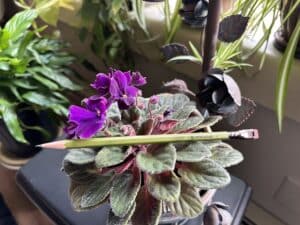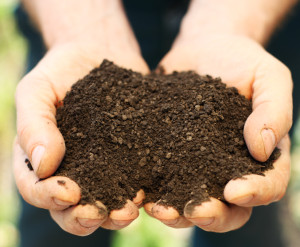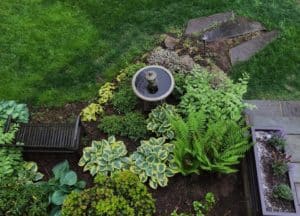Hello, fellow lovers of all things green,
I always felt giving is more glorious than receiving, but I’m not sure now after a gift came with a delightful surprise. While opening the box of green Blackwing pencils Ken Roberts gave me, my dear friend and singing partner for the Karen Ann Quinlan Home for Hospice, I noticed they were limited edition Gardening Pencils, leading to learning about the essential nutrients for gardens and life.
Gardening provides essential “nutrients” we need for a fulfilling life.

Blackwing Vol.17 The Gardening Pencil
The package explains, “Blackwing 17 examines the mindful practice of gardening. Gardens have long been a place for meditative contemplation. They provide us with an escape from a world that constantly demands our attention.”
“Gardening has been proven to uplift spirits and lower stress and anxiety. It provides us with an opportunity for new growth, a meaningful routine, and a template for nurturing other aspects of our lives. Just as there are 17 essential nutrients for healthy plant growth, there are many essential ‘nutrients’ for a fulfilling life. Keeping a garden allows us to tend to ourselves with love, happiness, and purpose.”
Isn’t that beautiful? It reminds me of a story we shared, the Benefits of Gardening, written during the pandemic when the interest in gardening and nature grew—good things from such a difficult time.
Plants’ Basic Nutrients come from water and air.
As with our bodies, plants give clues about things they need or the nutrition they are missing. Seventeen essential nutrients influence plant growth, and plants struggle if there are too many of some and not enough of others. There’s quite a science to it all, and the Blackwing website has a surprisingly good explanation.
Plants’ Basic Nutrients come from water and air, just as with humans. We can only survive a few days without water; our bodies are mostly water, which every cell needs to function. There’s hydrogen from water that builds plant sugars and plant structure. Carbon takes in the carbon dioxide from the air and converts it into energy to develop sugars and carbohydrates. Then there’s oxygen released into the air, but plants save some for future energy.
 Macronutrients needed by plants come from the soil
Macronutrients needed by plants come from the soil
Plants also require substantial amounts of Six Macronutrients from the soil, such as nitrogen, necessary for chlorophyll production and photosynthesis. When there are deficiencies, leaves turn yellow, and growth slows.
There’s phosphorus, which impacts energy storage and movement within the plants. And it’s crucial for roots, flowers, and fruit development.
Potassium is the component that helps plants regulate moisture and cold resistance and affects the fruit’s quality.
Magnesium is critical for root development, enzyme activity, and chlorophyll production. One of the symptoms of not having enough magnesium is the yellowing between the leaf veins.
Sulfur is essential to amino acids, vitamins, and chloroplast development. Shortages of sulfur impact new growth, whereas the lack of nitrogen targets older foliage.
Calcium is a significant part of the cell walls of plants and helps strengthen leaves—deficiencies of calcium cause stunted growth and weak roots.
Iron, copper, zinc, boron, manganese, chlorine cadmium, and vanadium are also in soil— part of the elements of soil nutrition, not included in Blackwing’s write-up.

Ann’s Shade Garden – a delightful client I’ve had the pleaser to work with.
How to determine if our soil has enough nutrients?
Your local extension office provides soil testing to determine if your soil has enough essential nutrients and will advise you on fertilizer or supplements should there be deficiencies. In addition, if there are symptoms of plant decline, you can share samples of the problem along with soil samples, and they can guide you on remedies.
My friend Barbara sent a quote by Audrey Hepburn, “To plant a garden is to believe in tomorrow.”
I’ll add another, “Let us be grateful for the people who make us happy. They are the charming gardeners who make our souls blossom,” that comes from Marcel Proust, a French novelist (1871-1922).
Thank you, dear friends and kind readers, for adding to my happiness.
May we all dig deeper into the messages of the gifts we receive and pass them forward. Wishing you a Happy New Year of growth.
Garden Dilemmas? AskMaryStone@gmail.com and your favorite Podcast App.
There’s more to the story in the Garden Dilemmas Podcast:
Do you have favorite quotes about gardening and nature you’d like to share? I’d love to hear from you by emailing me at AskMaryStone@gmail.com.
Related Stories you’ll enjoy and Helpful Links:

Joy of Receiving Cut Flowers featuring Ken Robert’s kind heart.


